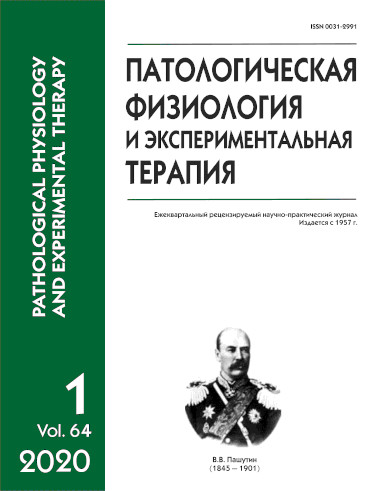Indexes of pro- and antioxidant status in kidneys of rats with experimental diabetes mellitus
Abstract
The aim of the study was to assess indexes of pro- and antioxidant status of the kidneys in experimental diabetes mellitus. Methods. The study was performed on 25 Wistar male rats in compliance with requirements of the Rules for Carrying Out Work using Experimental Animals. The animals were divided into two groups, a group of intact rats (control) and a diabetic group (experiment) containing 12 and 13 rats, respectively. Diabetes mellitus was modeled with an injection of streptozotocin (65 mg/kg, i.p.). For more specific modeling of type 2 diabetes, the rats of the experimental group received a solution of cytoflavin at a dose equivalent to nicotinamide 115 mg/ kg, i.p. At 28 days of the experiment, rats were decapitated under ether anesthesia, and activity of free radical oxidation (FRO) was studied in the kidneys. The following indexes were determined in the kidney tissue: concentration of thiobarbiturate- reactive fatty acid oxidation products (TPBP); total pro-oxidant activity by color intensity of the fluorescent complex formed by the interaction of TWEEN-80 peroxidation products with thiobarbituric acid; activities of antioxidant enzymes, catalase (CAT), superoxide dismutase), and glutathione peroxidase (GPO). CAT activity was measured by the CAT inhibition of sodium molybdate oxidation with hydrogen peroxide. SOD activity was measured by the content of nitroformazan, a colored product of nitrotetrazolium reduction with superoxide radicals. The marker of GPO activity, unoxidized glutathione, was measured by the color reaction with Ellman’s reagent. Results. The study findings included increased TBP represented primarily by malonic dialdehyde, as well as increased TPOA (total pro-oxidant activity), and GPO and SOD activities in diabetic kidneys. Conclusion. Experimental diabetes mellitus was associated with pronounced oxidative stress in the kidney tissue, as evidenced by increased TPBP and TPOA, as well as by increased activities of antioxidant enzymes.






